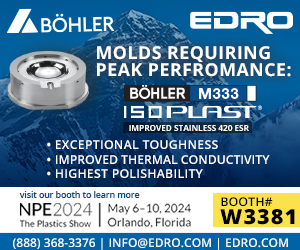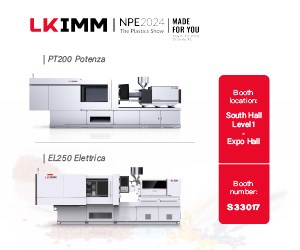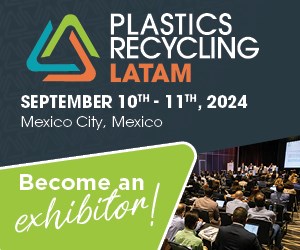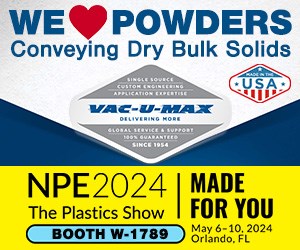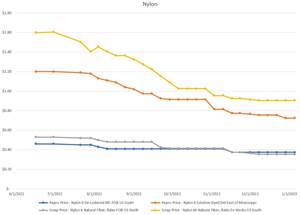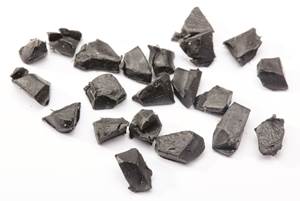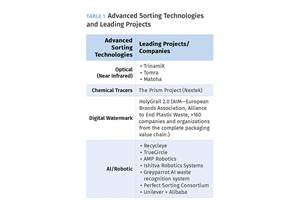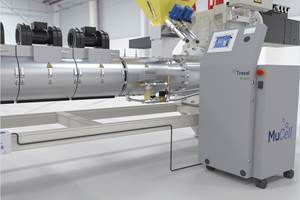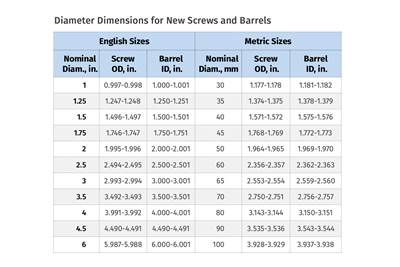Big German Plant May Relieve U.S. Bottleneck in Recycling Carpet Nylon
An unexpected bottleneck in U.S. nylon recycling could be alleviated by a giant new carpet recycling plant in Germany.
An unexpected bottleneck in U.S. nylon recycling could be alleviated by a giant new carpet recycling plant in Germany. Right now, post-consumer nylon 6 carpets are piling up in the U.S. due to lack of capacity for chemical recycling of the nylon back into virgin resin for automotive and other uses. At the same time, the German carpet recycling plant is running at well below capacity due to lack of material.
Carpet should have a lot going for it in recycling. It’s one of the largest components of waste plastic going to landfills. It’s largely made up of high value resin—nylon. Because of its molecular structure, nylon 6 is relatively efficient to break down chemically into its original building block—caprolactam. And because most used carpet is removed by contractors installing new carpet, collection is available to big commercial waste haulers.
Until last year, the two major U.S. recyclers of post-consumer carpets had a marriage made in heaven. Wellman Inc. collected and sorted used nylon carpets at a plant near Atlanta. Wellman used the nylon 66 to make black injection molding compounds for automotive use. Wellman sold the nylon 6 carpets to Evergreen Nylon Recycling, a joint venture of DSM and Honeywell Inc. in Augusta, Ga. The $100-million plant could chemically reclaim nearly 200 million lb/yr of nylon 6 carpet waste.
But Evergreen was mothballed indefinitely last August, less than two years after it started up. The company blamed higher-than-expected production costs. That left Wellman without an outlet for the nylon 6 carpets it takes in. Accumulation of those unused carpets threatens to put a crimp in Wellman’s collection and recycling of nylon 66. A shortage of nylon 6 carpet in Europe may offer a solution.
Hungry for carpets
What is probably the largest nylon 6 carpet recycling facility now operating is at Polyamid 2000 in Premnitz, Germany. PA 2000 was set up in 1999 to reclaim post-consumer carpet material from all over Europe using chemical depolymerization and repolymerization of nylon 6 and extrusion compounding of nylon 66. Three large German waste haulers began to collect used carpets for the program. Collection then broadened to involve waste haulers in the Netherlands, Belgium, Luxemburg, Denmark, Switzerland, Austria, and more recently northern France and the U.K. PA 2000 even got a shipment of over 4 million lb of separated nylon carpet from Evergreen Nylon Recycling in the U.S. last year.
The huge PA 2000 installation cost around $200 million, which was provided by the state government of Brandenburg in the former East Germany and a couple of German private investors. PA 2000 occupies a 592,000-sq-ft plant that was the site of the first nylon production in Germany in 1942 (for parachutes). It produced virgin nylon up until the reunification of East and West Germany in 1990.
Polyamid 2000 is now producing about 44,000 to 55,000 lb/day (15 million lb/yr) of nylon 6. It is running at about 75% of capacity, well below initial targets. The plant had expected to process roughly 264 million lb/yr of carpet into 20 million lb/yr of nylon 6, plus 26 million lb of nylon 66 and other engineering plastics.
But PA 2000 needs more nylon. “The content of nylon in European waste carpets is less than expected and decreases every year,” says Dr. André Karutz, technical manager of PA 2000. Recyclers had expected 30% of European carpet to be nylon 6 and another 30% nylon 66. Instead, they are finding 20% each of nylon 6 and 66, says Carpet Recycling Europe (CRE), a two-year-old sorting operation set up by the carpet industry in Kerpen, Germany.
What’s more, nylon carpet in Europe is only 25% face fiber and 75% backing. In the U.S., carpet pile is much deeper—45% face fiber and 55% backing, making the economics of nylon recycling more attractive. That’s why German recyclers find U.S. deep-piled carpets so irresistible.
CRE, which operates an automated carpet-sorting center, says that waste carpet collection became more difficult when landfill tipping fees got cheaper in Germany. “When the carpet-recycling program started, tipping fees were over $90/ton, making recycling viable,” says Andreas Bohnhoff, managing director of CRE. “Those fees went down by half to $45/ton. Landfill must cost at least $75/ton for carpet recycling to be viable.”
The latter problem will go away by itself in 2005, when a new German waste-management law comes into effect, banishing all carpet from landfills. “Until then, German waste haulers are trying to landfill as much as possible, not recycle,” says CRE’s Bohnhoff.
Meanwhile, PA 2000 and others are looking to the U.S. as one source of nylon scrap to bridge the gap, at least until 2005. There is a lot of successful recycling of carpet tiles in the U.S., both post-consumer and post-industrial, but collection and recycling of regular carpet is limited. However, the U.S. carpet industry just executed a memorandum of understanding among its members and several state governments, agreeing to a voluntary increase in the level of carpet recycling. So collecting carpet for export to Germany could—at least in the short term—support U.S. goals, too.
The U.S. fiber industry is keeping an eye on how well PA 2000’s technology works. “They have a few technologies that are new, including Raman spectroscopic identification and using waste incineration to generate heat for drying the nylon powder,” notes Mark Ryan, manager of environmental initiatives at DuPont Co. in Wilmington, Del. “Still, it’s hard to justify the size of their investment.”
Mammoth scale
The PA 2000 plant boasts an elaborate automated material-handling system, massive shredding and pulverizing capability, 16 centrifuges for resin separation, and depolymerization reactors to return nylon 6 to caprolactam, which is then purified and made into “near-virgin”-quality nylon 6 again.
The process, designed by Zimmer AG and Lurgi AG, both of Frankfurt-am-Main, Germany, begins by breaking incoming bales of carpet. An operator then puts each piece of carpet individually in a clamp on a “wagon,” which travels up an incline to join an overhead transport system 60 ft in the air. Each wagon has a bar code that identifies that piece of carpet throughout the process.
The wagon takes its piece of carpet to one of eight “shower stations,” where a small, high-speed water jet washes an area of carpet about the size of a quarter, allowing an infrared spectrometer (from Bruker Optics Inc.) to identify the resin automatically. This is believed to be Bruker’s only carpet-reclaim customer using Raman IR laser spectroscopy. Several U.S. carpet reclaimers use Bruker’s NIR spectrometer with a hand-held probe.
The spectrometer categorizes the carpet substance as nylon 6, nylon 66, or “other.” The latter includes polypropylene, cotton, wool, polyester, jute broadloom, and even old oriental carpets—all of which are shredded and incinerated in PA 2000’s steam-generating plant.
The steam is sold to the power plant next door, which supplies electricity to PA 2000 and to the town. After incineration, the residual materials—calcium carbonate and various oxides and hydroxides—are sold to mineral processors for drying natural talc.
Nylon 6 carpet is shredded in one of three giant machines from Vecoplan Maschinengesellschaft (parent of Vecoplan LLC in the U.S.). One of the other two shredders is dedicated to nylon 66 and the remaining one to “other” carpet materials.
Shredded nylon 6 passes through a station for removal of ferrous and nonferrous metals and then through one of six pulverizing mills from Netzsch-Condux Mahltechnik GmbH in Hanau, Germany (its head office is in the U.S.). Pulverizers reduce the shredded fibers and backing to particles of less than 5-mm size.
That material goes to the first of two banks of eight centrifuges, supplied by Bird Machine Co. (formerly Baker Process). In the first bank of centrifuges, potassium carbonate is added to the water to raise the density of the solution to 1.2 g/cc. That makes the latex-rubber carpet backing sink, while nylon 6 and PP fibers float. The rubber goes to an outside plant where it is made into construction materials.
Nylon 6 and PP fibers go into the second bank of centrifuges, this time in plain water, so the nylon 6 sinks while PP floats. Leftover heat from incineration of “other” materials is used to dry the PP and nylon 6 after separation.
The PP is dried, boxed in gaylords, and sold for use in fiber-reinforced concrete panels. The dried nylon 6 is pneumatically conveyed to a twin-screw extruder.
Molten nylon 6 from the extruder is sent to three depolymerization reactors. Steam and phosphoric acid catalyst are added to the reactors, breaking down the nylon 6 into caprolactam and water. The mix is distilled twice to remove the water and yield caprolactam at 99.9% purity. PA 2000 says its product will eventually be less expensive to produce than virgin nylon 6 because it’s made in only two steps—melting and reacting with steam—versus five reaction steps to make nylon 6 from crude oil.
Nylon 66 carpet travels on a separate track through shredding, pulverizing, and centrifuging steps just like nylon 6 but in separate dedicated equipment. Nylon 66 is melt compounded into black pellets that PA 2000 sells for injection molding.
Related Content
Recycled Material Prices Show Stability Heading into 2023
After summer's steep drop, most prices leveled off in the second half.
Read MoreAvoid Four Common Traps In Granulation
Today, more than ever, granulation is an important step in the total production process. Our expert explains a few of the many common traps to avoid when thinking about granulators
Read MoreRecycling: What's Ahead in Advanced Sorting Technology
As the industry tries to ramp up recycling, there are several innovative sorting solutions in the offing—ranging from enhanced optical sorting technologies and chemical tracers to advanced solutions based digital watermarks and artificial intelligence.
Read MoreFoam-Core Multilayer Blow Molding: How It’s Done
Learn here how to take advantage of new lightweighting and recycle utilization opportunities in consumer packaging, thanks to a collaboration of leaders in microcellular foaming and multilayer head design.
Read MoreRead Next
How Polymer Melts in Single-Screw Extruders
Understanding how polymer melts in a single-screw extruder could help you optimize your screw design to eliminate defect-causing solid polymer fragments.
Read MoreTroubleshooting Screw and Barrel Wear in Extrusion
Extruder screws and barrels will wear over time. If you are seeing a reduction in specific rate and higher discharge temperatures, wear is the likely culprit.
Read More


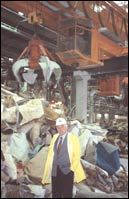
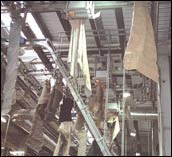
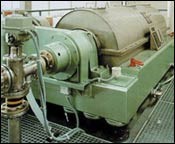
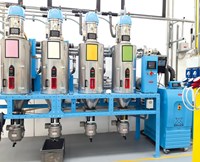
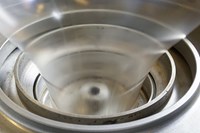
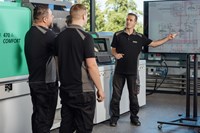
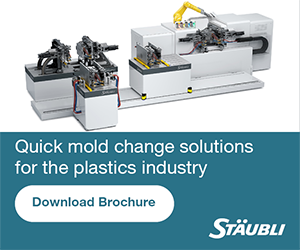

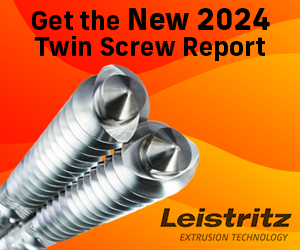
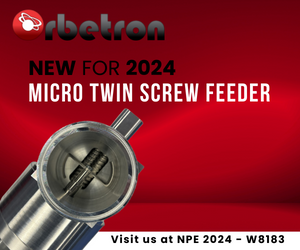

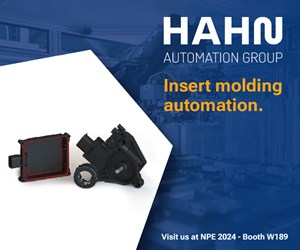
.png;maxWidth=300;quality=90)
